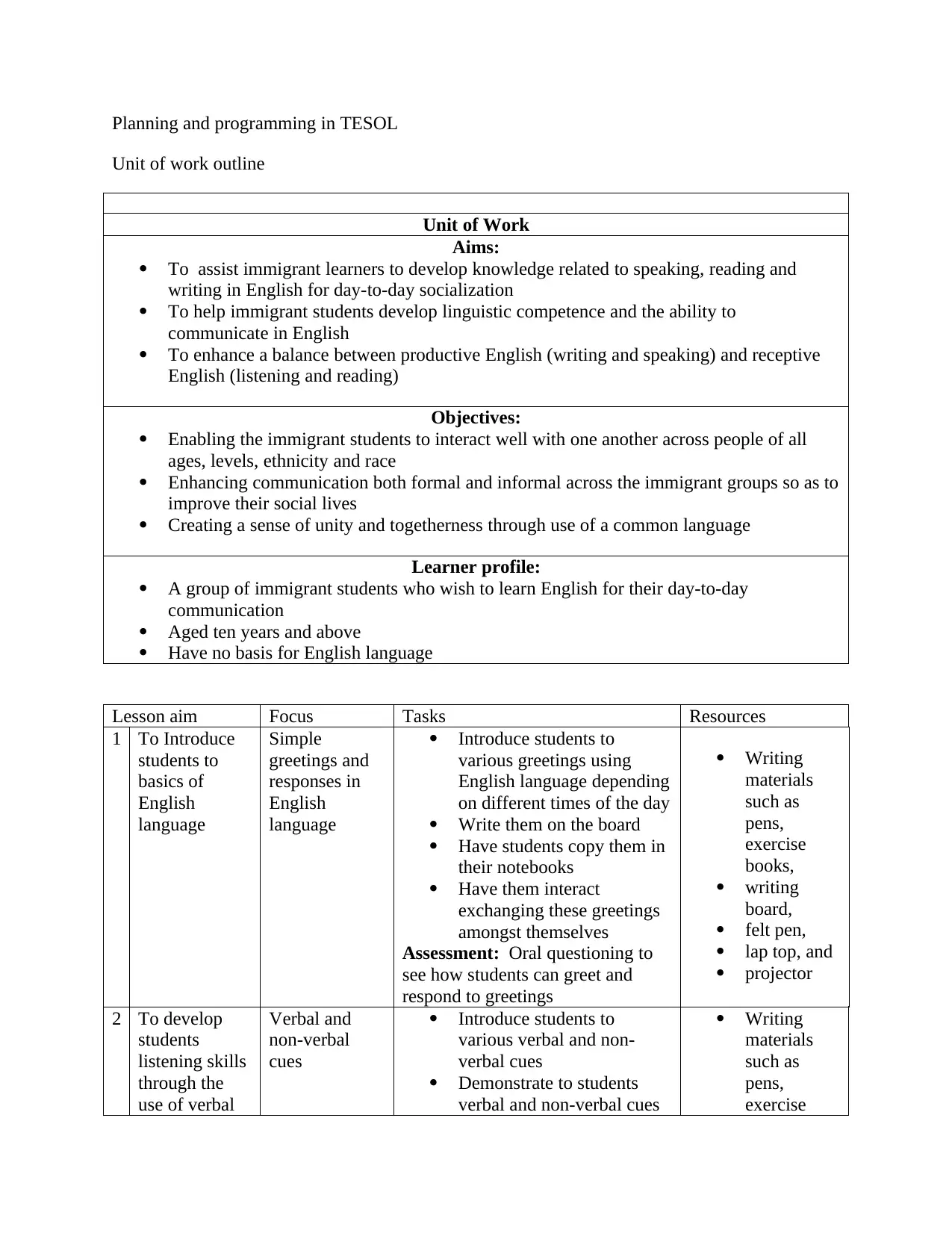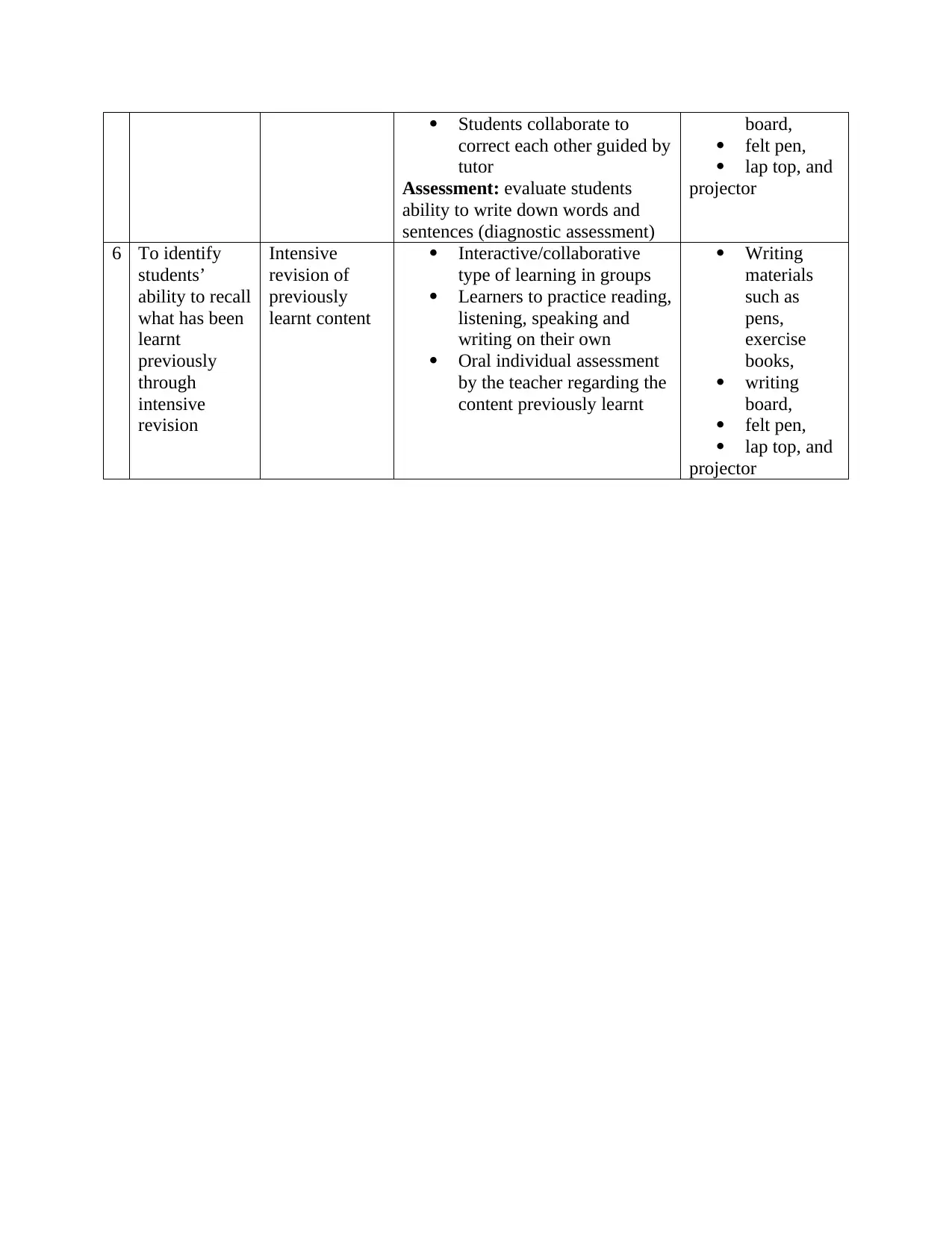Planning and Programming in TESOL - Unit of Work Outline
VerifiedAdded on 2023/01/12
|3
|646
|25
AI Summary
This document provides a detailed outline for a unit of work in TESOL, focusing on developing English language skills for immigrant learners. It includes aims, objectives, learner profile, lesson aims, tasks, and resources.
Contribute Materials
Your contribution can guide someone’s learning journey. Share your
documents today.
1 out of 3
![[object Object]](/_next/static/media/star-bottom.7253800d.svg)







